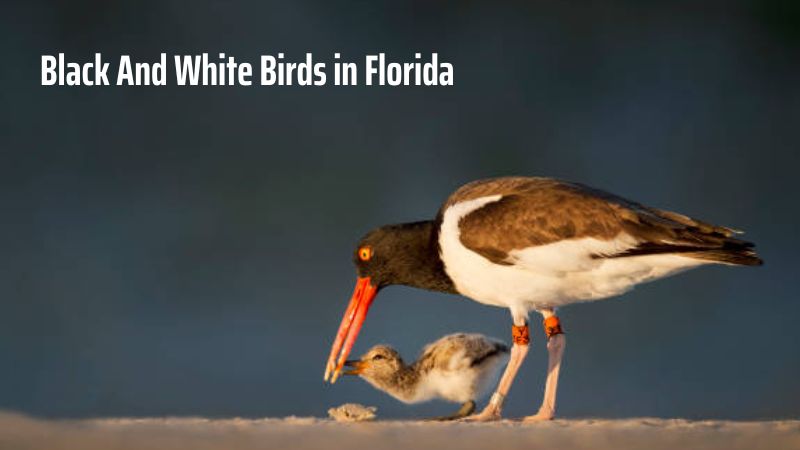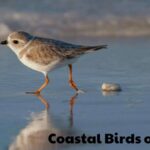Bird Training
Exploring the Majestic Black And White Birds in Florida
Florida is home to a fascinating array of black and white birds in florida, each with unique adaptations and striking appearances. From the majestic Great Egret to the sleek Black-crowned Night Heron, these birds add a dramatic contrast to the state’s diverse avian landscape.
Exploring the lives and habitats of these black and white birds provides insight into the beauty and complexity of Florida’s natural ecosystems. Let’s explore more details with Bird 04!
Common Characteristics of Black and White Birds in Florida
Color and Pattern
- Shades of Black and White: Black and white birds in Florida display various shades of black and white, ranging from pure white to deep black with intermediate hues.
- Color Placement: These colors are strategically distributed across different parts of the body, often with black and white contrasting sharply with each other. For example, black may dominate the wings and back, while white can cover the chest and belly.
- Feather Patterns: The feathers can exhibit intricate patterns such as stripes, spots, or patches. These patterns are often used for camouflage or courtship displays.
Shape
- Size and General Body Shape: The size of black and white birds can vary significantly, from small, delicate warblers to larger, robust species like egrets or herons. Their body shapes can range from streamlined to more robust and bulky, depending on the species.
- Distinctive Features:
- Beak: The shape and size of the beak can vary widely, from long and slender for probing and catching insects to short and thick for cracking seeds.
- Legs and Feet: Their legs can be long and slender, suited for wading or perching, or short and sturdy, adapted for ground feeding or climbing.
- Wings: The wing structure can also differ, with some species having long, pointed wings for fast flight and others having broad, rounded wings for slow, graceful soaring.
These characteristics help in identifying black and white birds in Florida and provide insights into their behaviors and adaptations in their natural habitats.

The Significance of Black and White Colors in Nature
Camouflage
- Blending into the Environment: The black and white coloration of birds often helps them blend into their surroundings. In various habitats, such as snowy landscapes or dense forests, these colors can help birds remain inconspicuous to predators and prey.
- Avoiding Predators: The stark contrast between black and white can provide effective camouflage in specific environments. For instance, in a landscape with mixed light and dark areas, this coloration helps break up the bird’s outline, making it harder for predators to spot them.
Communication
- Attracting Mates: Black and white plumage can play a role in courtship displays. The contrasting colors can highlight certain features or patterns, making the bird more visually appealing to potential mates.
- Signaling Territory: The color patterns can also be used to establish and defend territory. Bold, contrasting colors can serve as visual markers to other birds, signaling that a particular area is occupied and defended.
Temperature Regulation
- Heat Absorption and Reflection: The black and white coloration can aid in regulating body temperature. Black feathers absorb more heat, which can be beneficial in cooler environments or during early mornings. Conversely, white feathers reflect heat, helping birds stay cooler in warmer conditions. This combination allows birds to manage their temperature more effectively across varying climates.
Typical Black and White Birds in Florida
Great Egret
- Appearance: The Great Egret is a large bird with striking white plumage and a long, slender neck. It has a distinctively long, sharp beak and long legs. The all-white feathers are complemented by a graceful and elegant stature.
- Habitat: Found in wetlands, estuaries, and marshes, the Great Egret prefers areas with abundant water and vegetation where it can hunt for fish and amphibians.
- Behavior: This bird uses its long beak to probe the water for prey, often standing still for long periods before striking. It is known for its majestic, slow flight and graceful hunting techniques.
- Role of Black and White Plumage: The white plumage aids in camouflage against the bright, reflective surfaces of wetlands and helps in displaying during courtship rituals. The monochromatic color scheme also enhances its visibility against the green and blue backgrounds of its habitat.
Black-crowned Night Heron
- Appearance: The Black-crowned Night Heron is characterized by its black crown and back, contrasting with its white underparts. It has a stout body, short legs, and a relatively short neck.
- Habitat: This heron prefers a variety of wetland environments, including marshes, lakes, and coastal regions. It is commonly found in areas with dense vegetation near water.
- Behavior: Known for its nocturnal feeding habits, the Black-crowned Night Heron hunts primarily at night, using its keen eyesight to locate fish, insects, and small animals. It has a distinctive, slow flight pattern and is often seen roosting in trees or dense foliage during the day.
- Role of Black and White Plumage: The black crown and back help in camouflage among the dark, shaded environments of its roosting spots, while the white underparts may reflect light during its nocturnal activities, aiding in low-light visibility.
Other Black and White Birds
- Belted Kingfisher: Often seen perched near water bodies, this bird has a prominent white belly and blue-gray plumage with a striking crest.
- Osprey: Known for its distinctive black and white markings, the Osprey is a large raptor that hunts fish and is frequently seen near coastlines and large bodies of water.
Conclusion
In conclusion, the black and white birds in Florida, such as the Great Egret and the Black-crowned Night Heron, showcase the striking beauty and adaptability of avian species in diverse habitats. Their distinctive plumage not only enhances their survival but also adds to the rich tapestry of Florida’s birdlife. Observing these birds offers a glimpse into the intricate balance of nature in this vibrant region.





